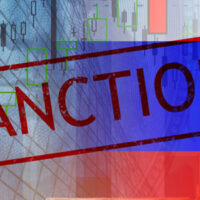
All financial institutions (FIs) are potential targets of criminals seeking to wash their ill-gotten revenues from the telltale signs of their illegal origins. In order to use the money, criminals and terrorists need to place it into the financial system, but in such a way that does not leave a clear trail of incriminating evidence for law enforcement to follow. As criminals seek to obscure the source and/or purpose of their dirty money, what kind of FIs are they more likely to seek as their unwitting partners? Are they more likely to choose community banks over much larger FIs? In reality, the risks to smaller institutions as opposed to big banks are not necessarily higher or lower—they are just different.
Despite the feel-good assertions of TV crime dramas and movies, crime does sometimes pay, at least monetarily. Moreover, many people are all too eager to fund terrorist groups aligned with their beliefs. However, criminals know that “following the money” is one of the best methods law enforcement has for finding the ultimate perpetrator of criminal activity; therefore, criminals seek to obscure their money trail.
Some of an FI’s money laundering risk may be determined by fixed characteristics such as location and demographics that are difficult to control regardless of the institution’s size. Banks and credit unions—both large and small in border and coastal regions as well as those in larger urban areas—are likely to be at higher money laundering risk than those in less risky areas. Similarly, an institution’s client demographics can strongly influence its degree of money laundering risk. Institutions of any size with higher concentrations of immigrant customers are much more likely to see higher volumes of cash transactions and higher numbers of incoming and outgoing international transfers than those with relatively few immigrant customers. Similarly, banks or credit unions with a higher percentage of older clients are likely to have higher volumes of check and cash activity and far fewer electronic transfers.
An institution’s client demographics can strongly influence its degree of money laundering risk
Certainly, larger FIs have a proportionately high risk of money laundering and terrorist financing just because of their numbers—the huge quantities of customers/members they serve automatically make their odds of having some bad players in their client mix more likely. That larger customer pool may also make big institutions more attractive to money launderers and terrorists by providing a much greater degree of anonymity—it is easier to blend in with the crowd when the crowd is significantly bigger and spread out over a much greater geographic area. Larger banks usually have a more expansive suite of financial product offerings and have a larger network of branches and ATMs through which money launderers can deposit and access their ill-gotten funds. (Funnel activity is much easier with a nationwide branch/ATM network.) Perhaps most importantly, big institutions often have a more global reach with branches or satellite offices in foreign countries, which can greatly facilitate international transfers if strong controls are not in place.
With all of those advantages, why would money launderers even consider using a community bank or small credit union? The answer is resources. It is no secret that big banks have the ability to deploy considerably more technology solutions and staffing to detect money laundering and terrorist financing activity than smaller institutions. By necessity, community bank employees tend to have less specialized roles and tend to “wear more hats.” This broader scope may make it harder for them to focus on money laundering issues or to spend time following an uncertain money trail that may ultimately lead to a money laundering or terrorist financing plot. Therefore, community bank anti-money laundering (AML) analysts tend to allocate their limited investigation time primarily into the cases that are less ambiguous. In contrast, larger banks may have entire financial intelligence units that focus solely on those less certain “rabbit hole” cases. Criminals may recognize these resource discrepancies and seek to avoid the (potentially) more intense scrutiny of a larger bank by choosing to deal with smaller institutions instead.
To prevent criminals from taking advantage of their limitations, small banks and credit unions need to leverage their resources as much as possible. Obviously, a strong AML program is a must and that program should be supported, where feasible, by the appropriate software assistance. Beyond that, smaller institutions should collaborate with other FIs where possible. Protecting customers/members and organizations from the bad guys does not need to be a competitive factor between FIs. While there is no debate that banks must do whatever possible to protect consumer privacy, they can be much more effective against criminal activity by working with other organizations to share information appropriately through Section 314(b) information sharing. Too many small institutions do not participate in 314(b) because of the perceived hassles. They take the stance that nonparticipation means one less compliance burden they have to manage. This is certainly understandable, but there are solutions in the AML network that take many of the compliance headaches out of the 314(b) process and make it relatively easy.
Even more critical than cooperation with other institutions is cooperation within one’s own institution. It is important to get management buy-in—this has been common advice for many years, but it is just as true now. If one can help management understand the money laundering risks facing their institution, they can help create a corporate culture that gets the whole bank on guard against suspicious activity, instead of just the Bank Secrecy Act (BSA) department. One can use that compliance culture to get the front-line associates involved. This is a strong advantage of a smaller institution’s size—they can interact with their front-line associates much easier than big institutions can. If customer-facing associates can get excited about protecting clients and the bank from the bad guys, then it will likely be an effective weapon against money laundering criminals. Those associates know their customers well—almost always much better than the AML staff does. Combining their customer knowledge with the AML expertise of the BSA staff can deliver impressive results.
Although the inherent money laundering risks to large and small institutions are similar in scope, the type and strength of the controls they use to mitigate those risks can be quite different. Big banks must rely more heavily on large numbers of specialized employees using wide-ranging technology to find and stop the money launderers attracted to the anonymity of their large customer base, their extensive product offerings and their global reach. In contrast, Bank Secrecy Act/anti-money laundering managers at small banks must be creative and inclusive—using their communication advantage to work together with the extended associate pool within their organizations and with peer institutions—to strengthen their mitigating controls and leverage their resources to expose the criminals seeking to challenge their lesser scope.











Very well researched and helpful article. Thanks!